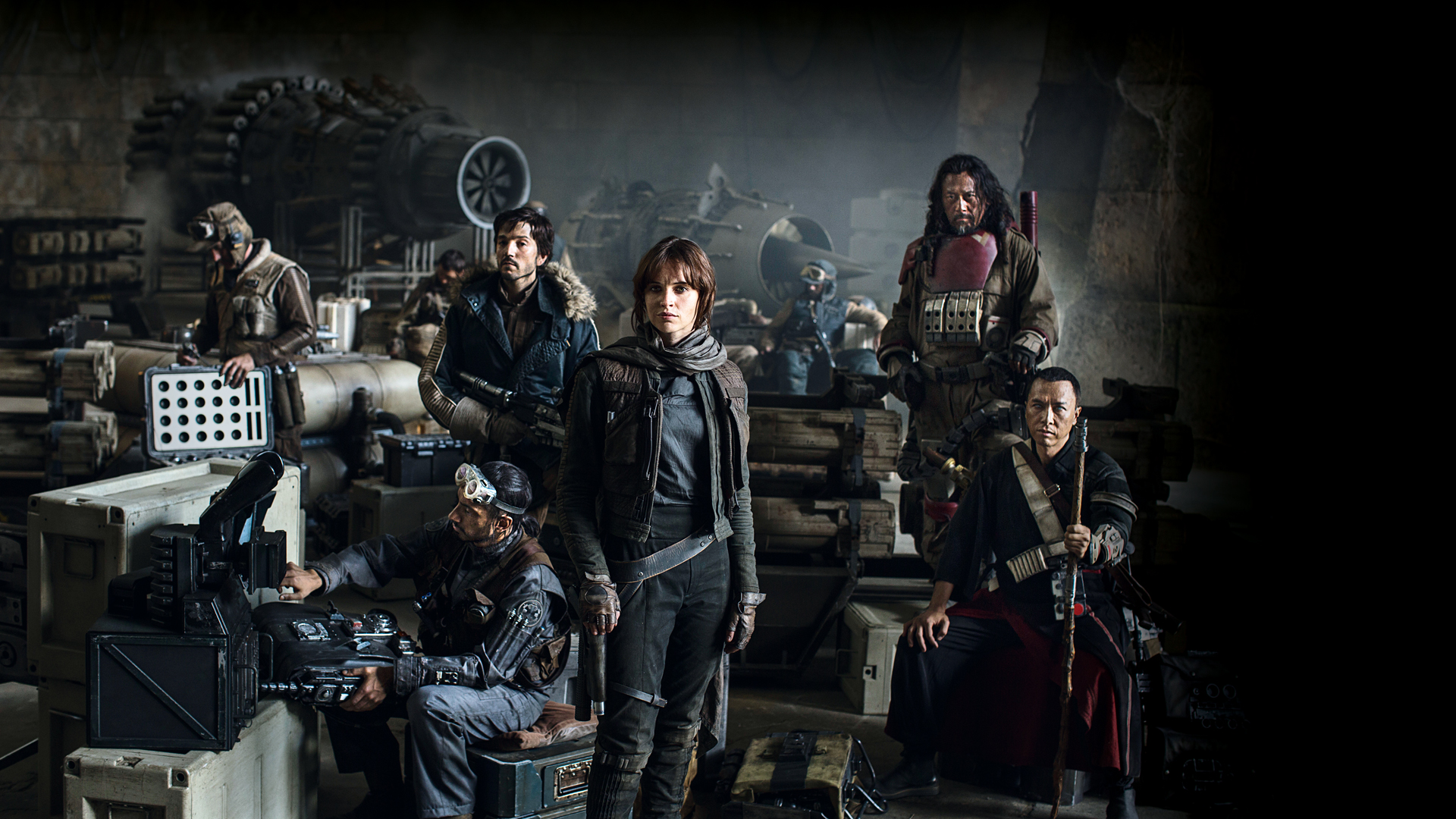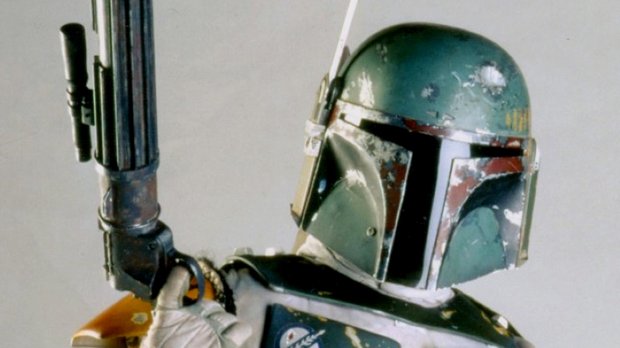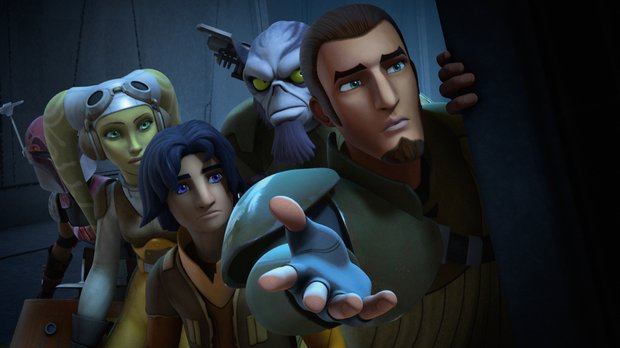How do you keep track of everything in the massive Star Wars universe?
Star Wars has never just been about the movies. Within months of the original film changing cinema forever, Marvel comic books and novels like Alan Dean Foster’s Splinter Of The Mind’s Eye – a tale of Kaiburr crystals, hanging out with Yuzzem, and Luke lopping off Darth Vader’s arm – were off exploring parts of the galaxy the movies never reached. The Expanded Universe was born.
The EU would become a vast, sprawling beast. Many characters found themselves with histories and the story continued beyond Return Of The Jedi, as Luke got married, Leia and Han had twins and Boba Fett famously escaped a thousand years of pain and suffering in the belly of the Sarlacc. There would eventually be contradictions between sources, and debates over what counted as canon – if it happened in the movies it was gospel; pretty much everything else could be open to reinterpretation. In other words, don’t bet on Mara Jade cropping up in The Force Awakens just because you’ve met her in the books.

Then, after Disney bought the keys to the Star Wars empire, new Lucasfilm boss Kathleen Kennedy announced a plan so audacious it made doing the Kessel Run in less than 12 parsecs look a doddle. The movies would no longer occupy their own rarefied “more important than everything else” status in Star Wars canon, as new films, books, comics and TV shows would fit into one, all-encompassing continuity. (The old Expanded Universe novels still exist, but as a separate “Legends” line.)
“It’s definitely exciting, because this kind of cohesive approach is something we’ve always aspired to,” says Pablo Hidalgo, a member of the Lucasfilm “Story Group” set up to be the arbiters of Star Wars canon. “In the past, you’d have multiple levels of authenticity, because we didn’t have this connective group acting as a bridge between film and television projects and what was happening in books, comics and games. We’re better set up for this different approach, where every Star Wars story could be a gateway into the same universe, the same big picture.”

Since the new continuity kicked off we’ve seen (among others) a novel focusing on Grand Moff Tarkin (Tarkin), and Marvel comics centred on Darth Vader, Princess Leia and Lando Calrissian – not to mention the pre-A New Hope Star Wars Rebels on the telly. With so many media to choose from, how do they decide what goes where? “There are attributes to a story that make it clear where it wants to live,” explains Hidalgo. “A political story like Tarkin worked best in a novel, whereas [Rebels hero] Kanan’s life after Order 66 works better as a comic. The story will tell you where it wants to be told.”
“Lucasfilm/Disney makes the ultimate decisions on where to tell what stories,” says Del Rey books editor Shelly Shapiro. “When we come up with ideas for a story we’d like to tell in a novel, we propose it to Lucasfilm and the Story Group. If it’s approved – or approved with tweaking – we move ahead to hire an author and hammer out the actual storyline with the author. So far, everyone (books, comics, games) has been playing very nicely together in the Star Wars sandbox.”
"Our goal is to be part of creating the larger universe of Star Wars."
“The process is definitely organic,” adds Hidalgo. “It starts with working with filmmakers, and finding a story that they are passionate about. That forms the core storytelling and other stories naturally flow out of those projects. One thing we’re not interested in doing is filling gaps for the sake of filling gaps.” That said, there are now some intriguing uncharted time periods in the Star Wars universe, such as the lead-up to A New Hope (when next year’s “Anthology” movie Rogue One will be set) or the aftermath of Palpatine’s demise. But with such established characters, how much freedom does a writer actually have?
Get sneak previews, exclusive competitions and details of special events each month!
“It varies from project to project,” says Shapiro. “In general, we have a lot of freedom to create, but the results are looked at very carefully by Lucasfilm and the Story Group. So free and yet not so free at the same time. Which makes sense – we have to be sure that what we’re doing in the books jibes smoothly with what is being expressed in movies, comics, games, even toys. Our goal is to be part of creating the larger universe of Star Wars.”

“It’s all challenging,” continues Chuck Wendig, who picked up the story after the Emperor and Darth Vader’s demise in his new novel Star Wars: Aftermath. “This is not only somebody else’s sandbox, but it’s a sandbox created by Lucas and then one that literally millions of people have imagined themselves playing in. So to get to jump in with my own narrative action figures and create a story there, it’s completely overwhelming. But in the best way possible.”
While Aftermath is predominantly focused on new characters, however, Kieron Gillen is writing for one of the most iconic characters in popular culture. Set between A New Hope and The Empire Strikes Back, Darth Vader picks up the Sith Lord’s story after Han Solo sent his TIE Fighter spinning. “We pitched freely in that [time period], but I’m a writer who knows how story works,” says Gillen. “There’s a start to this story – Vader, disgraced, after the loss of the Death Star. There’s an end to this story – Vader, on the bridge of the Executor, more powerful than ever, hunting his son across the universe. I’m not going to pitch a story that doesn’t tell how Darth Vader got from one to another, y’know? Even with my reputation, I’m not going to suggest an arc where Darth Vader packs it in and becomes a superstar DJ in the Star Warsian equivalent of Ibiza.”

Once a writer’s working on their story, the Story Group remains on hand to keep tone and continuity consistent. One of the Story Group, Leland Chee, has created an in-house database called the “Holocron”. “We also have plenty of documents, spreadsheets and whiteboard maps,” says Hidalgo. “And some of us just have really good memories for this stuff.”
“There was lots of back and forth,” says Wendig. “We’re trying to thread a needle here – forging the path ahead for the galaxy and also building into the lead-up to The Force Awakens. That means a lot of finessing and conversation as to how that happens just right.”
“It’s always a developing relationship,” explains Gillen. “Especially early on, I pitched some characters to be involved I suspected we wouldn’t get, but we wanted to see what the limits were. By now, it’s very much a more fluid thing, with information passing back and forth. I’ll do things like ‘Right, I’m going to create a crime boss here, but if you think there’s someone elsewhere in the canon you want to see here, that’s great.’ They’re incredibly generous with ideas and information, while also encouraging us to invent. I invent a lot of minor characters, and then tend to kill them off equally quickly. People sharing a stage with Darth Vader don’t really have a great life expectancy! For major characters, they’ll be in the proposal. Generally speaking, it’s additive. I’ll pitch why a character is interesting and necessary, and they’ll make it more interesting and necessary.”

George Lucas aside, Dave Filoni has possibly had his hands on more new Star Wars mythology than anybody else. As supervising director on the The Clone Wars, he oversaw 121 episodes of Jedi action – equivalent to about 20 movies – and has now moved onto Star Wars Rebels. He’s therefore in a unique position to compare two eras of Star Wars storytelling.
“Clone Wars was very different,” he says. “Before, there was basically George and I. When I had a problem or needed an answer, I’d just call George and ask him about it. And if George said that was it, that was pretty much it! There was no big debate necessarily. What we have now is an opportunity to have a group of people come together that all love Star Wars and know it well. We all know that no one person is going to be able to replace George, the guy that created this story. I have found it tremendously collaborative and rather exciting… I think it’s opened up our story a bit. It’s taken some of the pressure off because now you’re working as a team.”

Though writing and managing the Star Wars universe must seem like a dream job for a fan, we can see one slight drawback – you’ll never get to experience a new story as a newbie. “I wouldn’t trade it for the world,” counters Hidalgo. “Here’s an example: I knew Ahsoka would be coming down the Ghost’s ladder well before a single episode of Rebels even aired. That’s just how it goes. But the day the idea was pitched is a great memory, getting to watch that scene come together is great memories, and then getting to watch everyone’s reaction when that episode aired is a great memory too.”
“It’s been fun to be here and talk to the Story Group about Star Wars,” adds Filoni. “We all love Star Wars and we want to get it right. I think the one thing everyone in the Story Group has in common is such a tremendous respect for Star Wars and its legacy.”
Click here for more excellent SFX articles. Or maybe you want to take advantage of some great offers on magazine subscriptions? You can find them here.
Richard is a freelancer journalist and editor, and was once a physicist. Rich is the former editor of SFX Magazine, but has since gone freelance, writing for websites and publications including GamesRadar+, SFX, Total Film, and more. He also co-hosts the podcast, Robby the Robot's Waiting, which is focused on sci-fi and fantasy.


